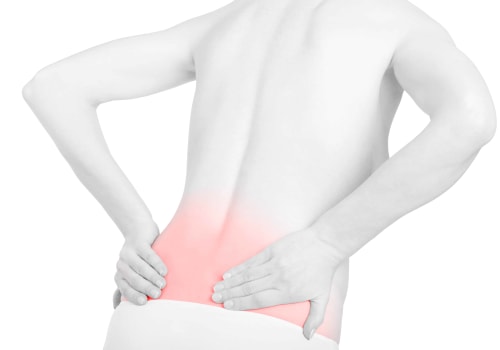A doctor of medicine (M, D. The main difference between osteopathic and allopathic physicians is that some osteopathic physicians provide manual medicine therapies, such as spinal physicians is that some osteopathic physicians provide manual medicine therapies, such as spinal manipulation or massage therapy, as part of their treatment. DO stands for Doctor of Osteopathic Medicine. They use the same conventional medical techniques as doctors, but with a few other methods.
ODs tend to focus more on holistic health and prevention. In holistic health, all parts of a person, including mind, body, and emotions, are considered during treatment. They also use a system of physical manipulations and adjustments to diagnose and treat people. The main difference between the two programs is that ODs learn osteopathic medicine, while MDs learn allopathic medicine.
Brain Tumor Nationally Recognized Destination of Brain Tumors for Patients in the Southeast. Heart A nationally recognized heart center offering comprehensive heart and vascular health services. Neuroscience Personalized Approach to Neurological Treatment for a Wide Range of Conditions. Fast same-day care around the corner.
Oncology Our multidisciplinary team provides comprehensive cancer care in a supportive environment. Maternity Services Compassionate, personalized maternity care for you and your baby. Primary Care Our providers are dedicated to providing care that helps you achieve and maintain better health. Transplant surgery is a pioneer in caring for the liver, pancreas, kidneys and heart.
Piedmont Now Same-Day Appointments with Primary Care, Urgent Care and QuickCare Providers. Piedmont MyChart Access your test results, contact your provider, order prescription drug refills, manage your appointments and more. Read articles on helpful tips, health news, recipes, and more. Our fitness centers focus on disease prevention, rehabilitation, and general health maintenance.
Pay Bill Track, Manage and Pay Your Piedmont Bill. Financial Assistance We offer financial assistance options for patients who qualify. It is, but have you ever been treated by a D, O. While these doctors attended different medical schools, most of them practice in the same hospitals and clinics, and today's patients are unlikely to notice large differences in treatment.
Although both M, D, s and D, O, s receive a similar education, D, O. Programs require 300 hours of training in osteopathic manipulative medicine (OMM), which focuses on the musculoskeletal system. D, O, s also often approach conditions from a medical and lifestyle perspective. An M, D.
Like D, O, s, they are trained through several years of coursework and clinical practice. Both M, D, s and D, O, s are licensed to work in all 50 states, Dr. In addition, many complete residencies in the same hospitals, and doctors often become colleagues once their training is completed as well. Although all D, O's receive OMM training, they are licensed physicians, not chiropractors or other health professionals.
Many M, D, s are also engaged in primary care, but they are also often found in more specialized fields. In modern healthcare, there's not much practical difference between a D, O. Most D, O's no longer use OMM in their daily work, blurring the lines between their practices and M, D. At the same time, many M, D, s now integrate a holistic perspective of the person into their treatment.
If you're looking for a new doctor, she recommends considering factors other than grade. How is the doctor's treatment at the bedside? Are you comfortable sharing information with them? Do you need to make an appointment with a Piedmont doctor? Save time, book online. Schedule with our online booking tool All videos and content are the exclusive property of Piedmont Healthcare and may not be used by third parties for any other purpose. The philosophy and practice of osteopathic medicine developed in reaction to the often harmful medicine practiced in the United States in the late 19th century.
Osteopathic medicine is an exclusively American branch of medicine that has continued to evolve in the United States through the scientific method of discovery. Osteopathic physicians (ODs) are fully licensed, patient-centered physicians. Have full medical practice rights in the United States and 44 countries abroad. The funny thing is that many people look down on a registered nurse and assume that nurses aren't as good as doctors or that they didn't work hard enough to get into medical school.
If you are looking for a doctor who has a more practical approach and who may be more open to alternative treatment options, an OD may be ideal. The only difference in residency for an MD and a DO is that osteopathic students can earn board certification in Osteopathic Manipulative Medicine. The truth of the matter is that an incredibly high percentage of physicians who graduate from osteopathic programs were unable to enter highly respected medical schools to obtain an MD. The main difference is that those studying for a DO degree must complete an additional 200 hours of study on the musculoskeletal system.
When you go to see a doctor now there is no doctor, but an OD or a medical assistant who pretends to be a doctor. The fact that a doctor has an MD or a DO behind their name has no bearing on their worth or ability to be a doctor. In other words, a doctor's annual salary is determined by a number of factors, mainly his field of expertise (radiologists, plastic surgeons, cardiologists, family medicine, etc. So to summarize my point, at the end of the day, what makes a doctor great, rather than the letters at the end of a name, is the doctor's character, the desire to be the best, the ability to let go of the ego and the ability to be willing to learn new things, look at things from fuzzy points of view and be open to the idea of what can be wrong sometimes.
If they went to an osteopathic medical school, they would put “DO (Doctor of Osteopathic Medicine) after their name. However, medical education eventually became structured, giving way to the formalization of the Doctor of Medicine (MD) and Osteopathic Physicians (DO) as we know them today. I assumed that I would benefit from the described manipulation techniques supposedly employed by the DOs and that to date, after more than ten years in their care, none of these doctors had physically touched me, except for the use of a stethoscope to check my breathing and heart rate. Doctors of Osteopathic Medicine (OD) and Doctors of Medicine (MD) are two types of accredited doctors who can practice medical care in the United States.
The only difference between DO and MD is that DO receives 300 hours of OMT training in the first 2 years of medical school. . .







